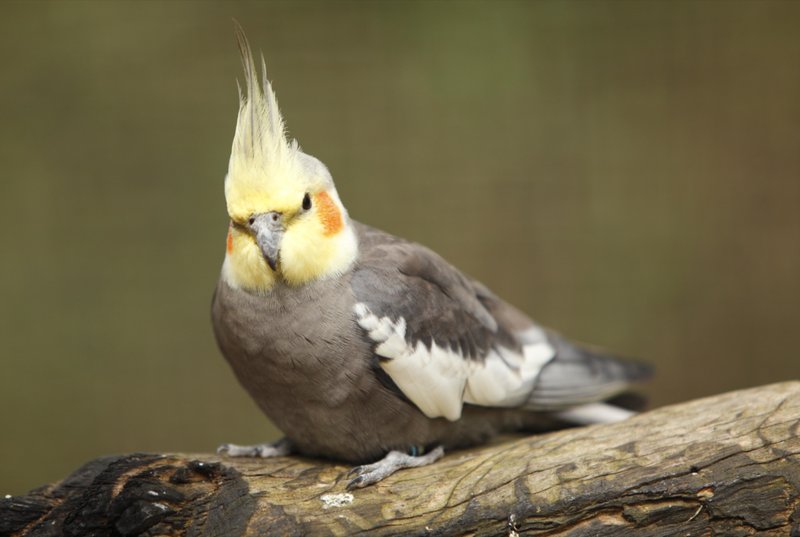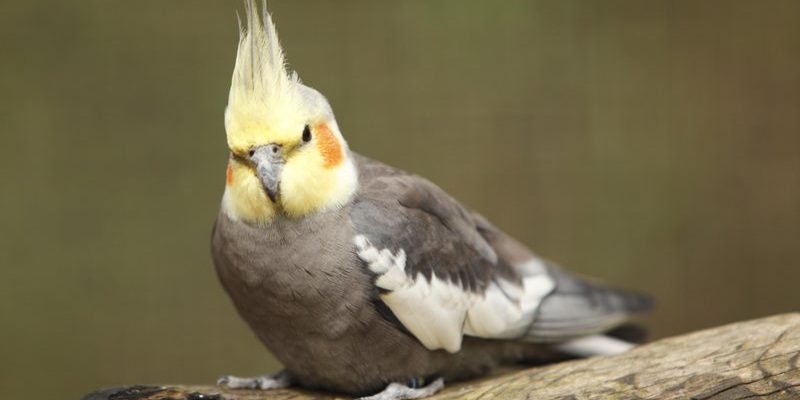
Cockatiels are native to Australia, thriving in various environments that help them flourish. But even within their homelands, they can be quite specific about where they like to hang out. So, let’s explore the various places you might encounter these feathered friends, painting a picture of their natural habitats and behaviors along the way.
Native Australian Habitats
Cockatiels are primarily found in Australia, where they inhabit a range of environments. You might find them in the wild in open woodlands, scrublands, and grasslands. Imagine vast stretches of sunlit fields dotted with trees; that’s where they typically make their home.
In these habitats, cockatiels prefer areas with plenty of grass and low bushes. They love to forage for seeds and fruits, which are their favorite snacks. You might also see them around waterholes or riverbanks, where they can drink and socialize. These social birds often gather in flocks, creating a delightful spectacle as they chirp and flit about.
Interestingly, cockatiels adapt well to various climates across Australia. In the north, they enjoy tropical conditions, while in the south, they can thrive in cooler temperatures. This adaptability helps them flourish in different environments, making them a common sight across the continent.
Urban Adaptations
You might be surprised to learn that cockatiels have taken a liking to urban environments as well. In cities and towns, they can often be spotted in parks and gardens, especially if there are plenty of trees and shrubs. Imagine a sunny afternoon in a park, where the sound of their cheerful whistles fills the air.
Many people feed wild cockatiels in these areas, which can encourage them to stick around. They become accustomed to human presence, so you might see them hopping around, searching for food. It’s a wonderful experience to see these birds adapt to the hustle and bustle of city life while still retaining their wild charm.
Even if you don’t live in Australia, you may still spot cockatiels in urban settings around the world. They can be found in aviaries and bird sanctuaries, where people care for them and create environments similar to their natural habitats.
Overseas Populations
While cockatiels are native to Australia, their popularity as pets has led to feral populations in other countries. You might find these birds thriving in places like New Zealand and parts of the United States.
In New Zealand, some cockatiels have escaped or been released from captivity and have adapted well to the local environment. They tend to inhabit wooded areas, parks, and gardens, creating a unique blend of wild and domestic life. In the U.S., especially in warmer regions, you might stumble upon cockatiels living freely, often near residential areas where people have kept them as pets.
It’s fascinating to see how these birds have established themselves in new territories. Their ability to adapt has allowed them to survive and even thrive outside of their original habitats, showcasing their resilience and tenacity.
Seasonal Movements
Cockatiels also exhibit seasonal movements, particularly in response to changes in food availability and climate. During the hotter months, they may migrate toward areas with abundant food sources. Picture flocks of cockatiels soaring through the sky, searching for the best spots to feed.
This behavior can lead them to travel long distances, especially if there’s a drought or if their usual feeding grounds become scarce. They often return to their favorite spots in cooler months, where the food supply is more reliable. Understanding these seasonal patterns can help birdwatchers know when and where to look for these lovely little creatures.
If you’re interested in spotting cockatiels in the wild, timing can make all the difference. The best times to look for them are during the early morning or late afternoon when they are most active.
Birdwatching Tips
If you’re eager to spot cockatiels in their natural habitats, having a plan can help. Here are some tips to increase your chances:
- Know Their Call: Cockatiels have a distinctive whistle. Learning to recognize their calls can help you locate them more easily.
- Choose the Right Locations: Visit parks, gardens, and open woodlands, especially in areas where they are known to gather.
- Be Patient: Birdwatching often requires patience. Find a comfortable spot and sit quietly to observe.
- Bring Binoculars: A good pair of binoculars can help you get a closer look without disturbing them.
Birdwatching can be a rewarding hobby, and spotting a cockatiel in the wild is a delightful experience. Just remember to respect their space and enjoy the moment.
Conservation and Habitat Preservation
While cockatiels are not currently classified as endangered, habitat loss poses a threat to their populations. Urban development and changes in land use can diminish the open spaces they need to thrive.
Supporting conservation efforts can make a difference. You can help by advocating for the protection of natural habitats and supporting organizations that work towards wildlife preservation. By raising awareness and participating in local conservation initiatives, we can help ensure that these beautiful birds continue to flourish in their native environments.
Every little effort counts, whether it’s planting native trees in your backyard or participating in community clean-up events. As we work together, we can create spaces where cockatiels and other wildlife can thrive.
Understanding where to spot cockatiels—both in Australia and beyond—opens a window into the lives of these fascinating birds. From their native habitats in woodlands and grasslands to urban settings and seasonal movements, there’s a lot to discover.
As they adapt to different environments and even make new homes overseas, cockatiels remind us of nature’s resilience and beauty. Whether you’re a seasoned birdwatcher or just starting, keep your eyes and ears open. With a bit of patience and the right approach, you might just catch a glimpse of these charming creatures in the wild. So, grab your binoculars and head outside; adventure awaits!

